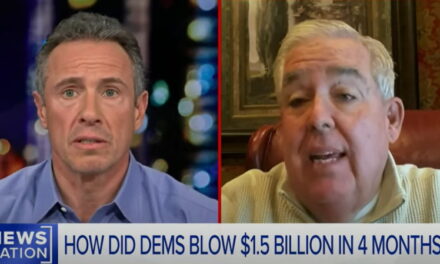We support our Publishers and Content Creators. You can view this story on their website by CLICKING HERE.
As we head into 2025, the fate of the Tax Cuts and Jobs Act (TCJA), passed in 2017 under President Donald Trump, looms large over America’s tax system. While taxes weren’t a major talking point in the lead-up to the 2024 election, the outcome could significantly impact what happens to the TCJA, which is set to expire at the end of next year unless Congress takes action.
What Does the Election Mean for Republicans’ Tax Agenda?
With a Republican president and the Republican Party controlling both chambers of Congress, the stage is set for major tax reform. Republicans will likely use the same strategy as Democrats did with the Inflation Reduction Act—passing legislation along party lines using budget reconciliation. This process allows them to pass tax policies with a simple majority, bypassing the need for a filibuster-proof coalition.
Republicans have long championed lower taxes for businesses and individuals, as well as tax incentives to boost economic activity. With a majority, Republicans are positioned to renew key provisions of the TCJA, though there could be internal debates on how far they should go in terms of cutting taxes and balancing the federal deficit.
What Happens to the Tax Cuts and Jobs Act?
The TCJA, which drastically reduced corporate tax rates, increased the standard deduction, and implemented other tax cuts, is set to expire at the end of 2025. President Trump and many congressional Republicans favor renewing these provisions. According to a 2024 estimate from the Congressional Budget Office (CBO), extending the TCJA would cost the federal government $4.6 trillion over the next decade.
However, Republicans are divided on how to move forward. One faction wants a full extension of the TCJA, while another group is more focused on ensuring tax policy doesn’t exacerbate the annual federal deficit. The stakes are high, and the outcome will likely depend on how Republicans in Congress balance tax relief with concerns over fiscal responsibility.
What Key Provisions Are Republicans Likely to Fight for?
Several key provisions are expected to be at the forefront of the debate:
- Higher Standard Deduction: The TCJA nearly doubled the standard deduction, which has been a popular change. Republicans are likely to push to keep this in place.
- Corporate Tax Cuts: The corporate tax rate was reduced from 35% to 21% under the TCJA. Some Republicans are even considering further reductions, potentially bringing the rate down to 15% for companies focused on domestic production.
- Individual Tax Cuts: The TCJA lowered individual income tax rates for most Americans. Some Republican lawmakers may advocate for making these cuts permanent.
- Estate Tax Exemption: The TCJA significantly raised the estate tax exemption, which could also be extended.
Other Potential Tax Proposals
Beyond renewing the TCJA, President Trump has proposed several new tax relief ideas on the campaign trail, including:
- Exempting tips, Social Security benefits, and overtime pay from income taxes.
- Creating an itemized deduction for auto loan interest.
However, there is some internal disagreement within the party. Deficit hawks are concerned about the revenue lossesthat could result from such cuts, potentially leading to opposition on some proposals.
Another hot topic is the state and local tax (SALT) deduction, which allows taxpayers to deduct state and local taxes from their federal tax returns. While the TCJA capped this deduction, there is increasing bipartisan pressure, particularly from states like New York, California, and Illinois, to raise or remove the cap. If enough lawmakers support this, we could see significant movement on this issue.
How Will Republicans Fund the Tax Cuts?
With a price tag of $4.6 trillion for extending the TCJA, Republicans will likely need to find ways to offset these costs. Some potential avenues include:
- Cutting Green Energy Subsidies: Republicans may look to eliminate subsidies from the 2022 Inflation Reduction Act, which could free up revenue for their tax proposals.
- Raising Tariffs: Another possibility is the introduction of tariffs on foreign goods, especially from China. There has been talk of raising tariffs on Chinese imports by up to 60% or imposing a blanket 20% tariff on all imports. Tariffs could raise money, but they may also lead to higher prices for consumers, adding another layer of complexity to the tax debate.
What About Tariffs?
Tariffs, which were a signature policy of the Trump administration, could play a central role in the tax agenda. While some tariffs were maintained by the Biden administration, the impact of additional tariffs remains unclear. Higher tariffson Chinese goods, especially in industries like electric vehicles or solar panels, could lead to rising costs for businesses and consumers, potentially fueling inflation. The political landscape will be key—domestic political pressures could influence how tariffs are applied and whether they are used to fund tax cuts or other proposals.
Key Questions to Watch Between Now and Tax Day
- Trump’s Cabinet Appointments: One of the most significant factors will be the appointments Trump makes for key positions, such as Treasury Secretary. These decisions could shape the direction of the tax bill and influence whether the proposed tax cuts are realized.
- Composition of Congressional Tax Committees: The composition of tax-writing committees in Congress will also be a major factor. Republicans may face a challenge uniting the party behind a unified tax plan, especially given the diversity of opinion on fiscal policy within the GOP.
About The Author

 Conservative
Conservative  Search
Search Trending
Trending Current News
Current News 





